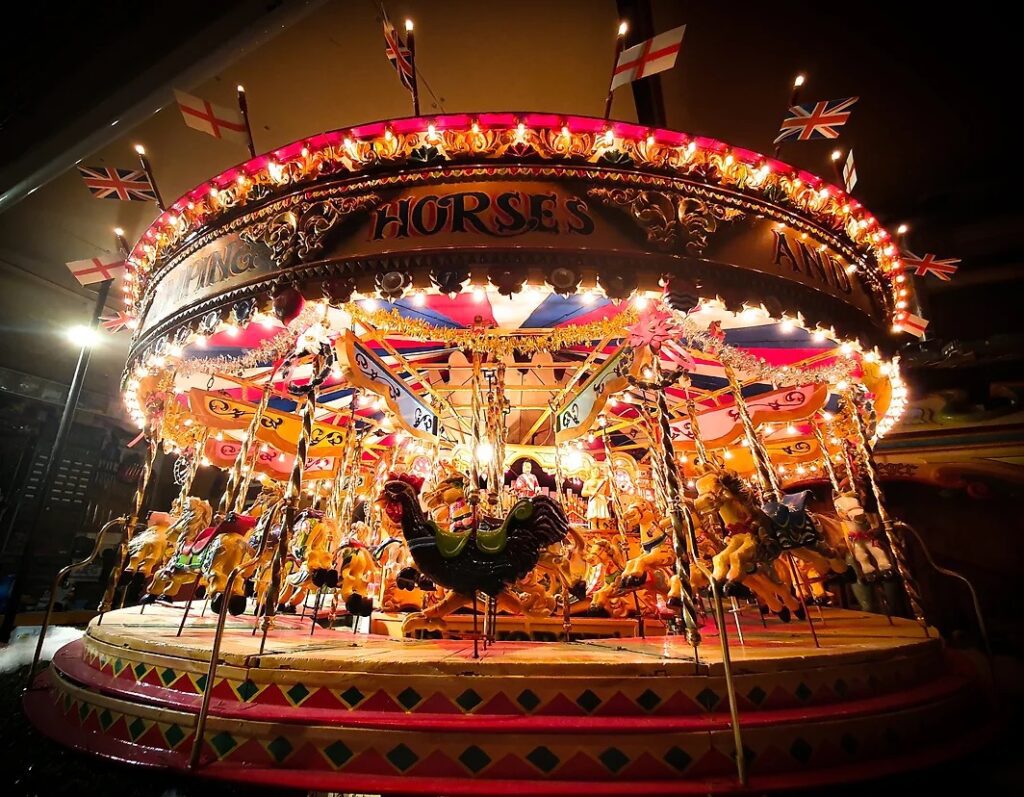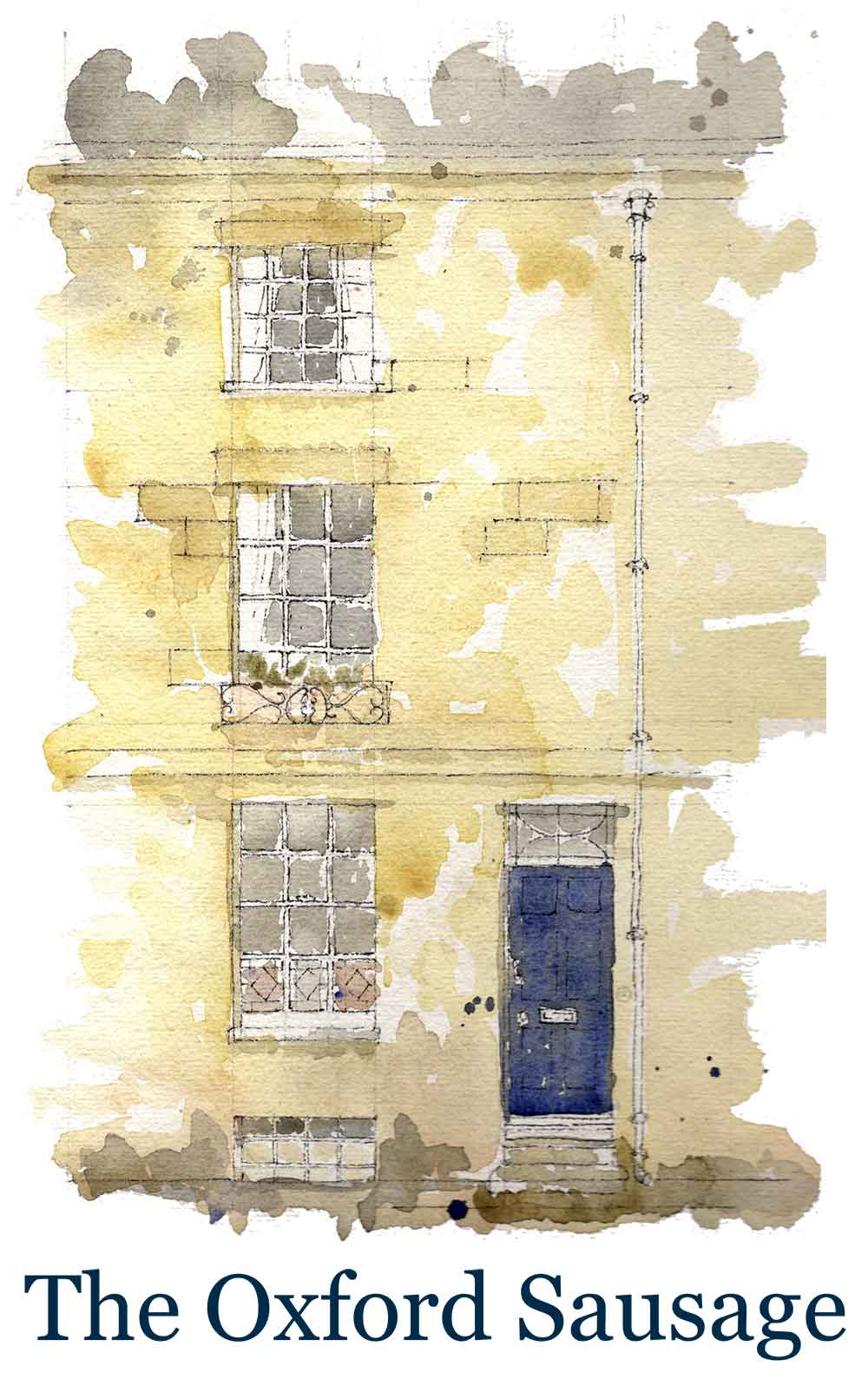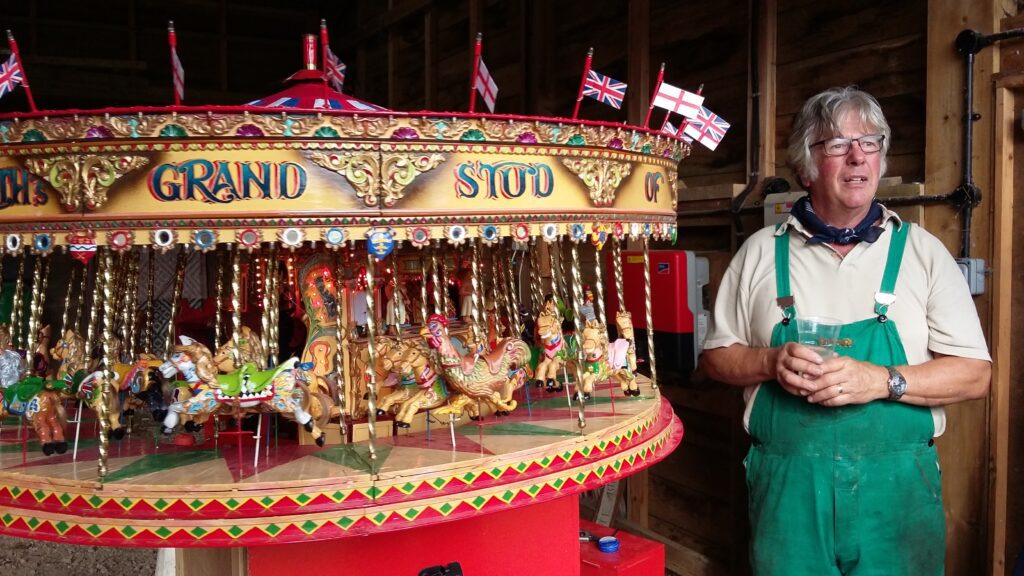I was delighted to be invited to meet Chris Raworth at his workshop in Middle Barton, catching him just after he had assembled his set of gallopers for the last time to check all was in working order before travelling to the summer shows. A tall man with a shock of white hair he can barely contain his excitement as he opens the door into a long garage lined with benches overflowing with mechanical parts and crammed with boxes painted with brightly coloured signwriting instantly recognisable as that of the fairground. Steam Yachts, Razzle Dazzle, Cake Walk, Grand Organ, these are the scale replicas he builds of the kind of ride you might have seen at fairs up and down the country at the turn of the century. But it is the gallopers that have been his life’s work.
Fifty years ago he set out to make what nobody had attempted before – a carousel of horses and roosters, standing four abreast, on a one inch to one foot scale in the old imperial measurements, a working model of a ride that would have only been seen at the bigger fairs like Nottingham Goose Fair, Hull Fair and of course St Giles’ Fair in Oxford, the place that his love affair with the world of showmen began. He’s an electrician by trade, but you can tell he has a working knowledge of the fairground as he seats me on a stool my eye level at the skirt of what he still calls after all these years ‘a work in progress’. “You’ll be seeing it from the height you would the real thing,” he says and with the flick of a switch the organ begins to play, the lights illuminate, and the horses lurch into action, their shiny painted bodies moving up and down on their barley sugar rods as they swing round and round and gather speed. I am immediately transported. The Golden Horses, as we called them in our family, have been a favourite of mine ever since my mother took me on my first ride at St Giles Fair at the age of five, and I still make a point of taking my yearly gallop. But for Chris, as I listen to him telling his story here amongst his models, they were and clearly still are his passion.
“My grandfather and great grandfather were carriage builders in Oxford. They were the Raworth and Son that had premises at 78-80 St Aldates on the corner of Speedwell Street up until the 1960’s. Opposite the Crown Court where the supermarket is now. They made and repaired horse carriages, pony traps and delivery carts, as well as painting the liveries for the likes of Wigmore’s Dairies and Grimbly Hughes, the grocers. Then when the motor car arrived, they supplied the bodies for Morris Garages. They built the original six two-seater bodies for what was to become the MG sports car.
My father didn’t carry on the business, but I was bought up in Oxford. And I remember my first visit to St Giles Fair and when I first saw the gallopers. They had more lights than I’d ever seen before, the horses were bright and shiny, I loved the sound and the noise and the colour – they were just beautiful. The horses were one of the last things coming to St Giles that still had the old carvings and all the trappings on it. By then the youngsters wanted the thrill rides. Jimmy Hatwell, a showman, once said to me he could never understand folk ‘cos they’d spend half their money filling themselves up with beer and the other half bringing it all up on the rides.
As a teenager I used to go down to St Giles to help out on a Sunday when the fair was being built up. I got to know everyone and got free rides in return. The Noyces had the gallopers. James Noyce and sons – Jimmy and Tommy. The family still have the ride, but they don’t come out very often because they don’t make the money they used to. It’s hard work putting the gallopers together. The horses are surprisingly big and weighty– each horse would be passed to you from the lorry. You’d get the horse’s backside on your shoulder, and you’d be holding its back legs, and the horse would be vertical. And then you’d walk with it like that until you got to the man who was standing at the bottom of the rod and then you’d let the horse fall forward trusting him to catch the front legs. And then when you had the horse horizontal – he had two legs and you had two legs you could slot it on to the rod that it hangs from.
I’d like to have been a showman and have my own real set of gallopers. It could be a good life in that you worked together and lived together, and they were good crews. But it wasn’t really practical when I was a teenager and not earning a lot of money, and then I got married and had a family quite early on and I couldn’t just go off travelling.
The first thing I ever built was a model fairground organ. I knew that I wanted to build a set of gallopers but I was new to it all then and so I built the steam yachts based on Harry Lee’s set. There wasn’t so much fancy carving. Then when I did decide to have a go at the horses, I wanted to build something nobody else had done. There were a few model gallopers that travelled but none which were four a breast. I made the mechanical centre truck first, and then started on the horses. But each horse takes about 40 hours to make from block of wood to painting and when a friend pointed out how long making 48 of them would take I kind of despaired and the project went into abeyance. But then twenty years ago I was asked to display what I’d made as a work in progress at the local Art Weeks festival. They asked again the following year, and I decided if I’d shown it last year as a work in progress then I’ve got to show some progress. It was enough to kickstart the project again.
Every showman who ordered a set of gallopers, the machinery was built to the manufacturers standard design. But the showman would dictate what decoration he wanted. It’s the same with the Raworth gallopers. The horses are all named after family and friends, each has their own individual characteristics hand carved on to the body. It builds up in exactly the same way as the real thing – it takes just as long, about six hours but only needs one person to do it not four.
The overall outline with the flat tops and rounding boards reflects the lines of James Noyce’s gallopers. The 12 coats of arms are the towns which held major fairs, part of the ‘back end run’ at the end of the season where you needed to make the money to last you through the winter – the local ones, Oxford, Witney, Abingdon, Stratford and Thame are all there. The era of decor I was aiming to replicate was the end of the Boer War, the early 1900’s. The fairs like to celebrate stuff – so when they landed on the moon all the rides had spaceships. So with mine there’s Queen Victoria under the panel. And around the side all the animals are African – the general public at this time had never before seen anything like them so it was very exciting – like a poor man’s zoo.
Nobody is born with an inbuilt ability; they are born with a desire to do something, and they will keep doing it until its right. When I got half-way through, I wondered why I ever started. But when I got to the end of it I am glad that I did”
I am too.
Photographs ©Chris Raworth
The Raworth Gallopers can be seen during this years St Giles Fair in St Giles Church.
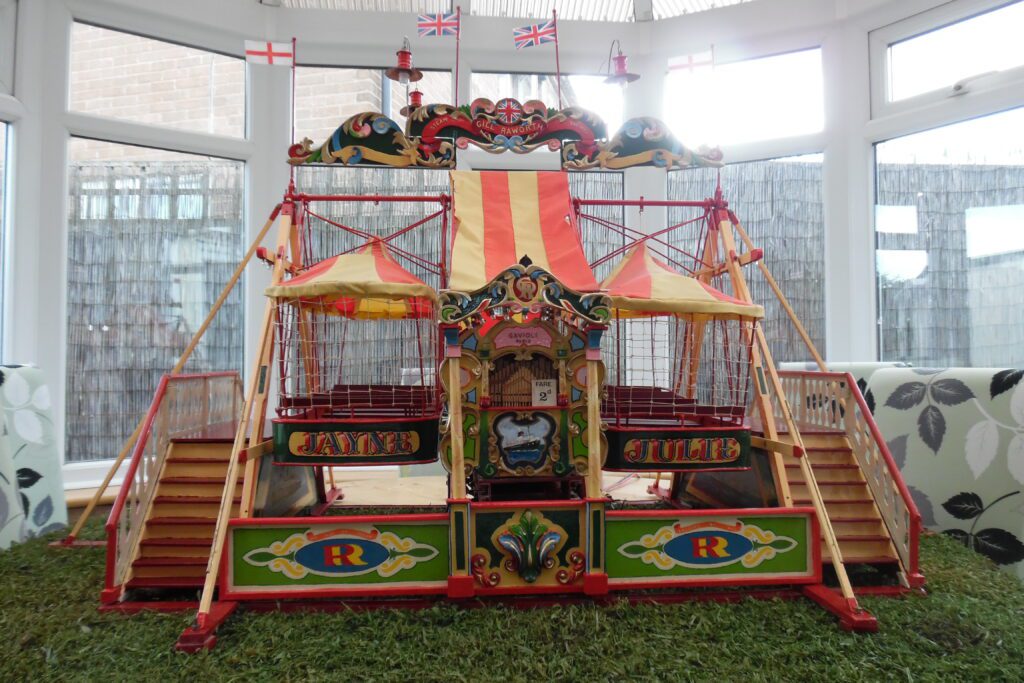
Chris Raworth’s first fairground model was the Steam Yachts. Jayne and Julie are his two daughters.
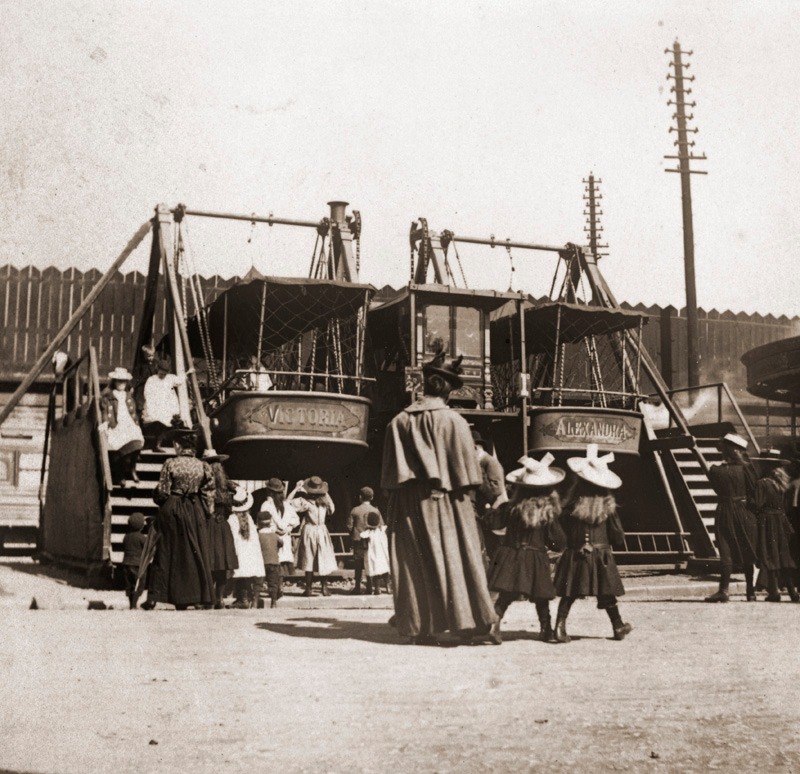
The ride on which they were modelled.
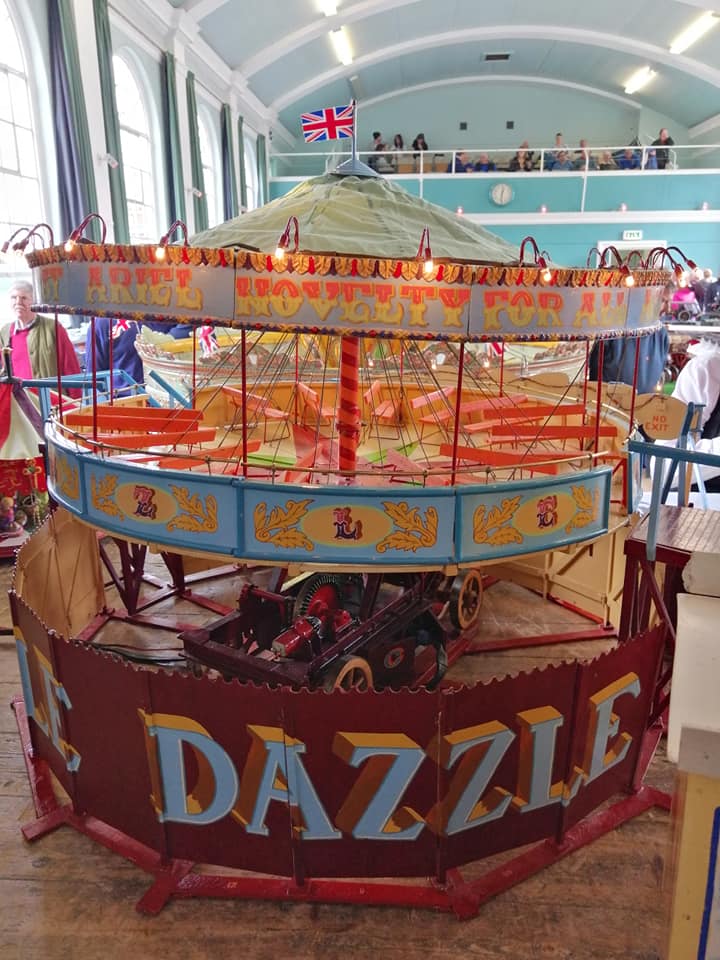
Next up was the Razzle Dazzle.
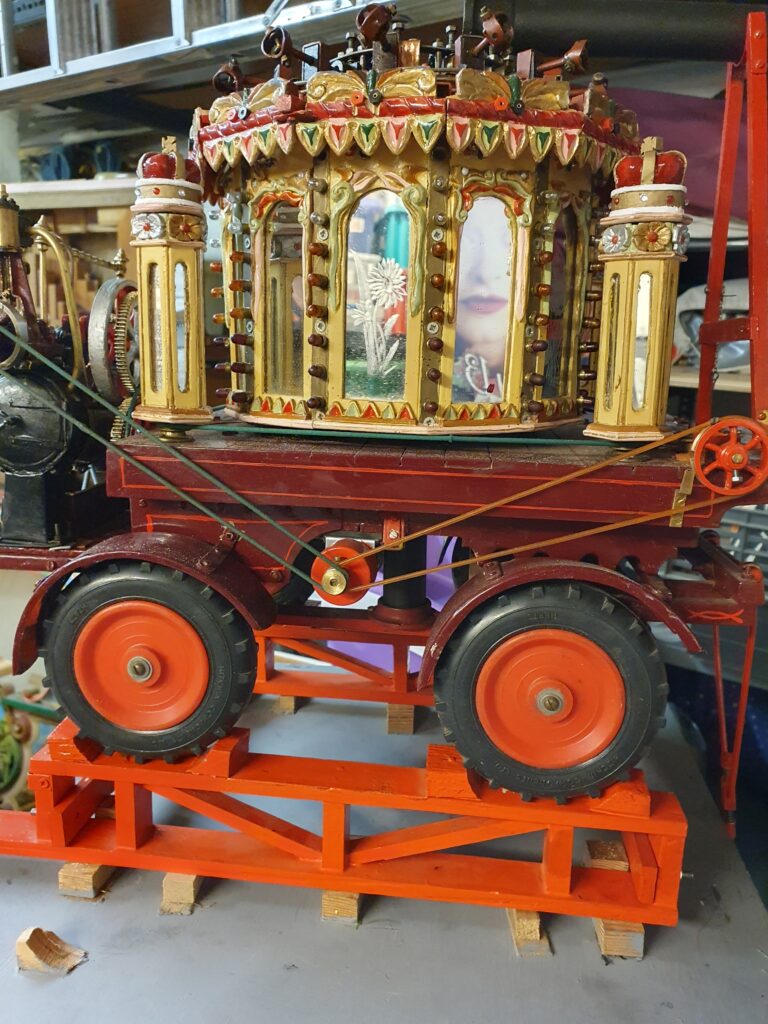
Like the original, Chris’s gallopers are built from a central truck.
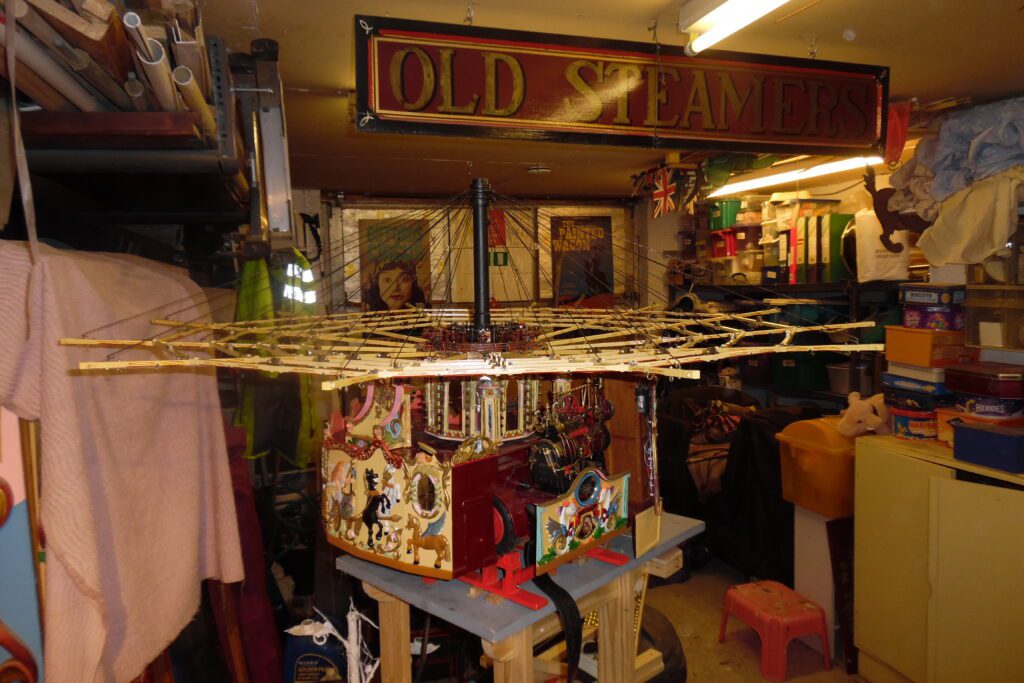
Chris’s workshop. Assembling the model gallopers takes six hours, just like the real thing. But requires only one person’s input not four.
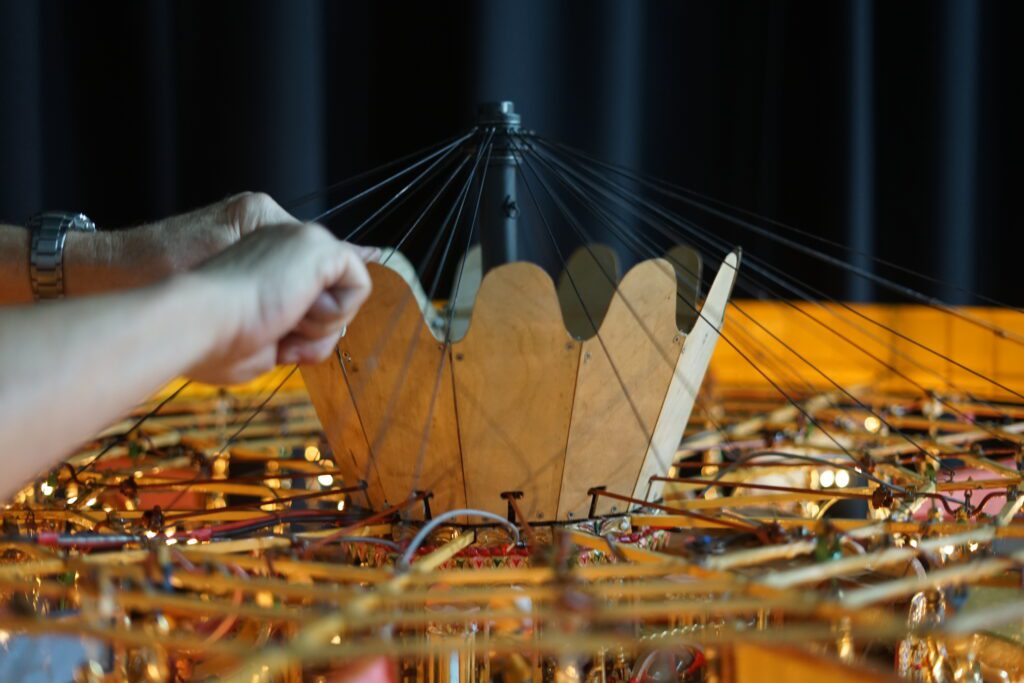
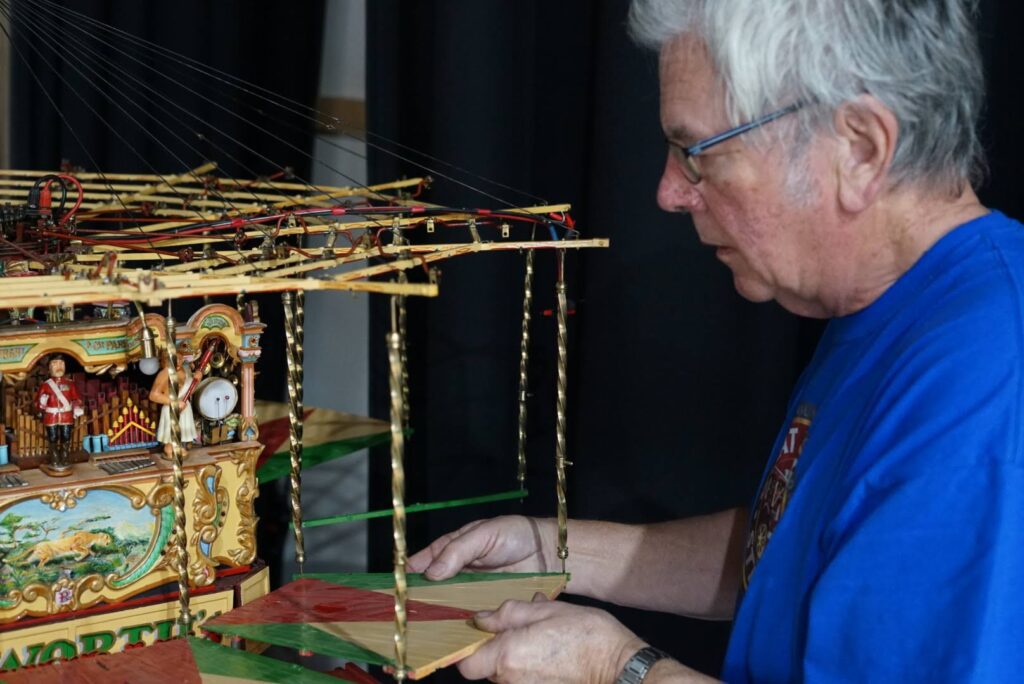
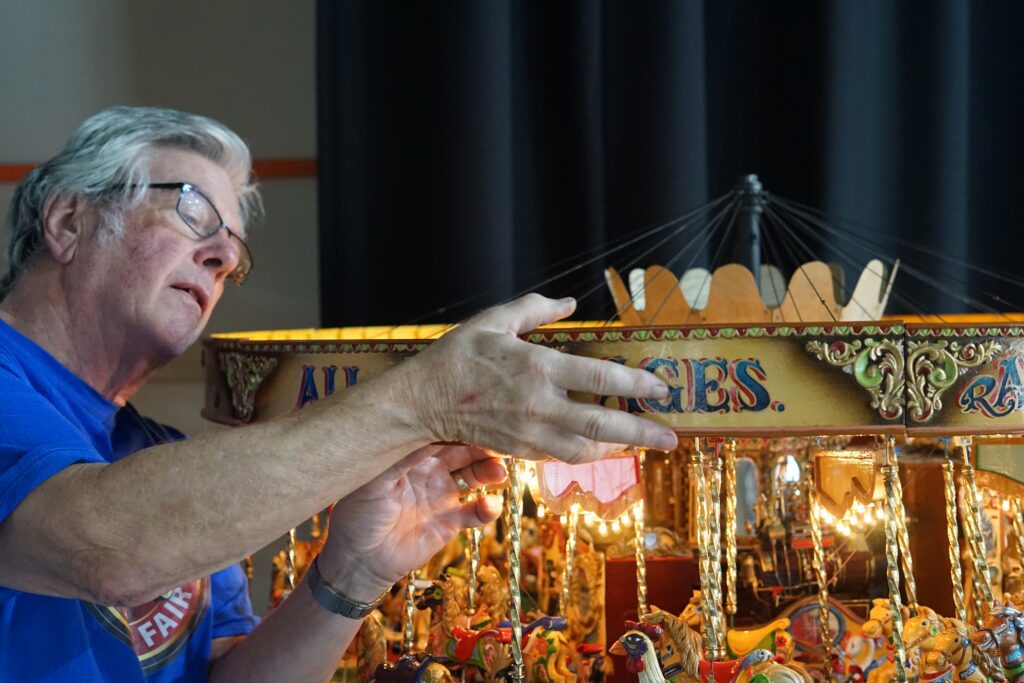
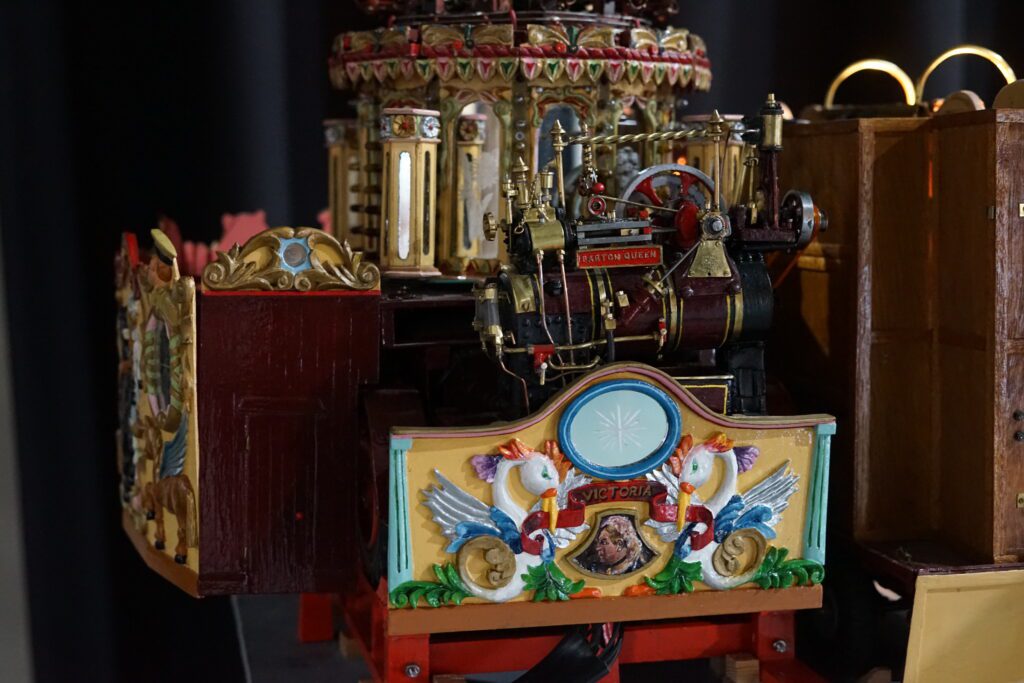
The carved portrait of Queen Victoria takes centre stage.
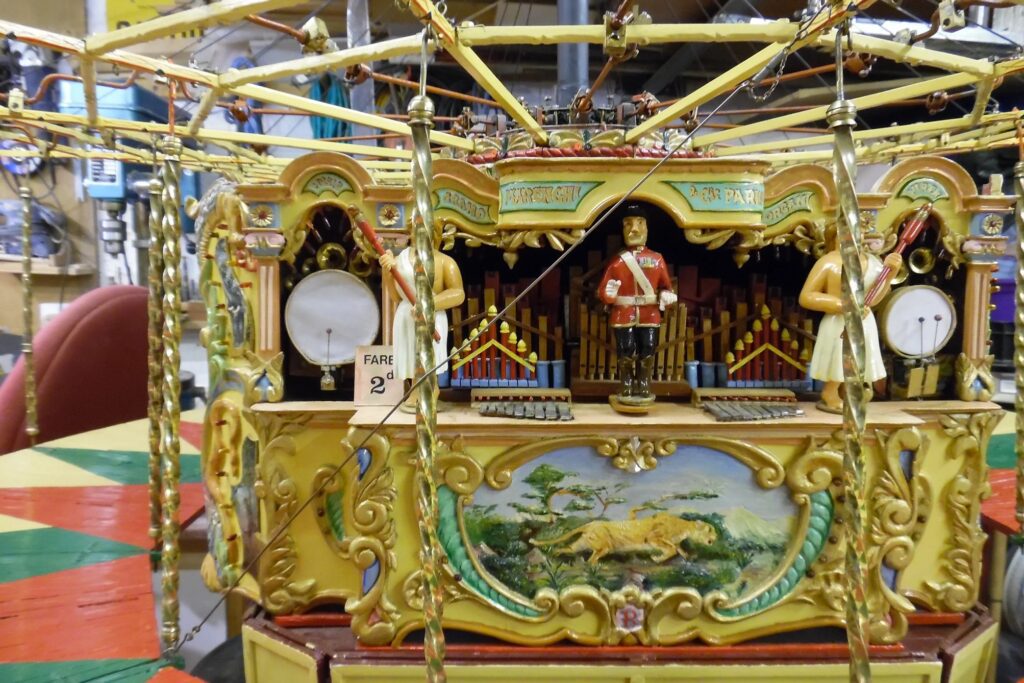
One of Chris’s African animal pictures below the working organ.
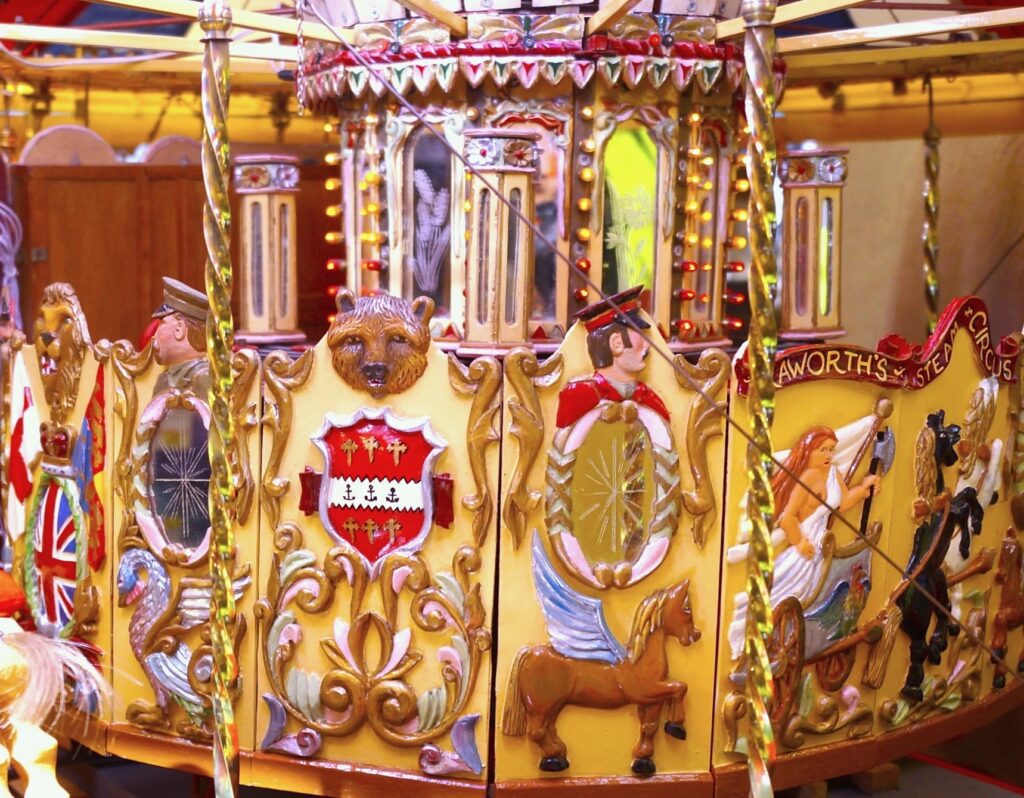
Coats of arms of towns to which large rides like this would have travelled.
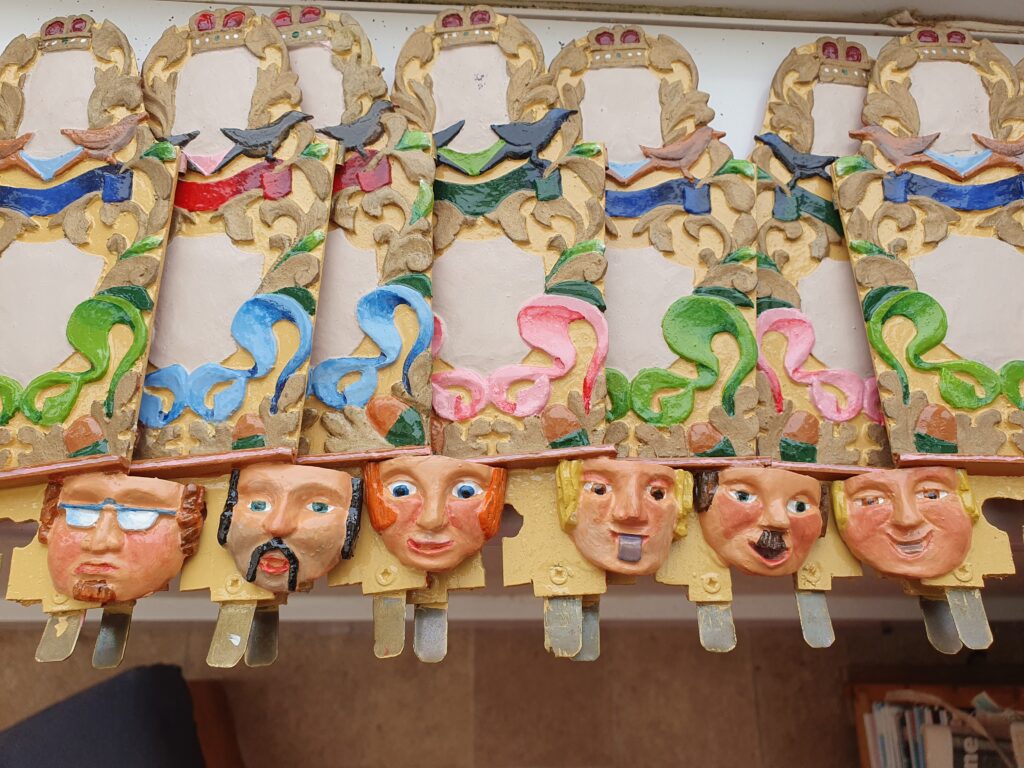
New additions to the decorations for 2024. Chris maintains there will never be a day when the model will be declared complete.
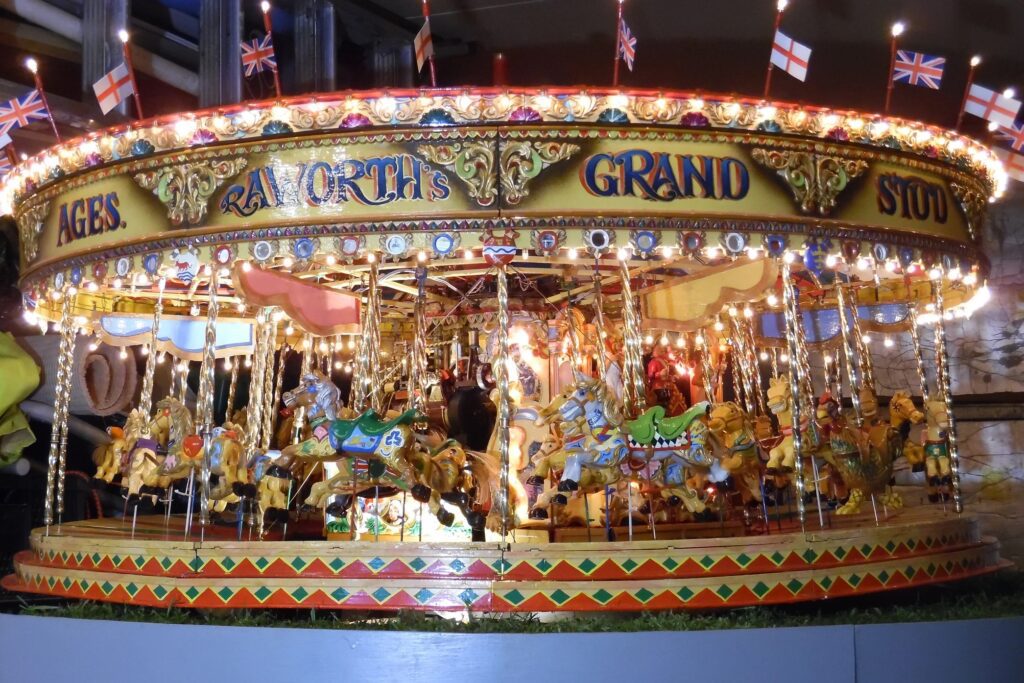
The finished set. There is always a lead horse on a set of gallopers which is identified in some way. The driver of the engine would stop the lead horse in the same place after every ride, so that anyone waiting for the riders would be able to meet them at the same place they got on at. On Chris’s gallopers the lead horse is named after his wife Gill, she has a silver mane and she stands under the Raworth name.
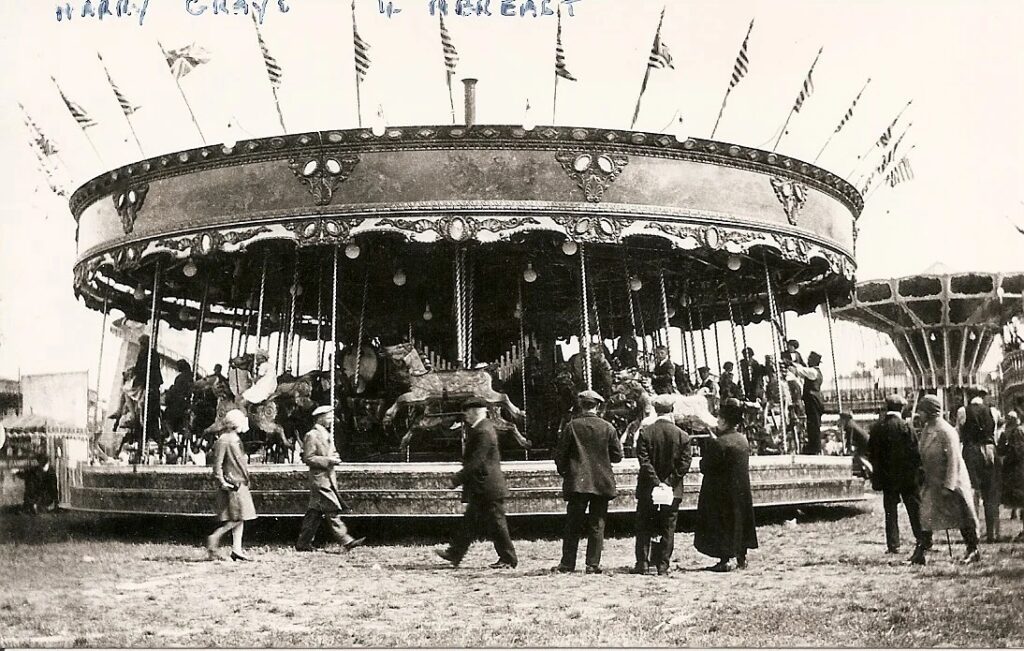
The commonest sets of gallopers were three a breast. But Frederick Savage built large four a breast rides (above) providing 48 mounts to accommodate the most amount of riders, allowing for the possibility of taking more money.
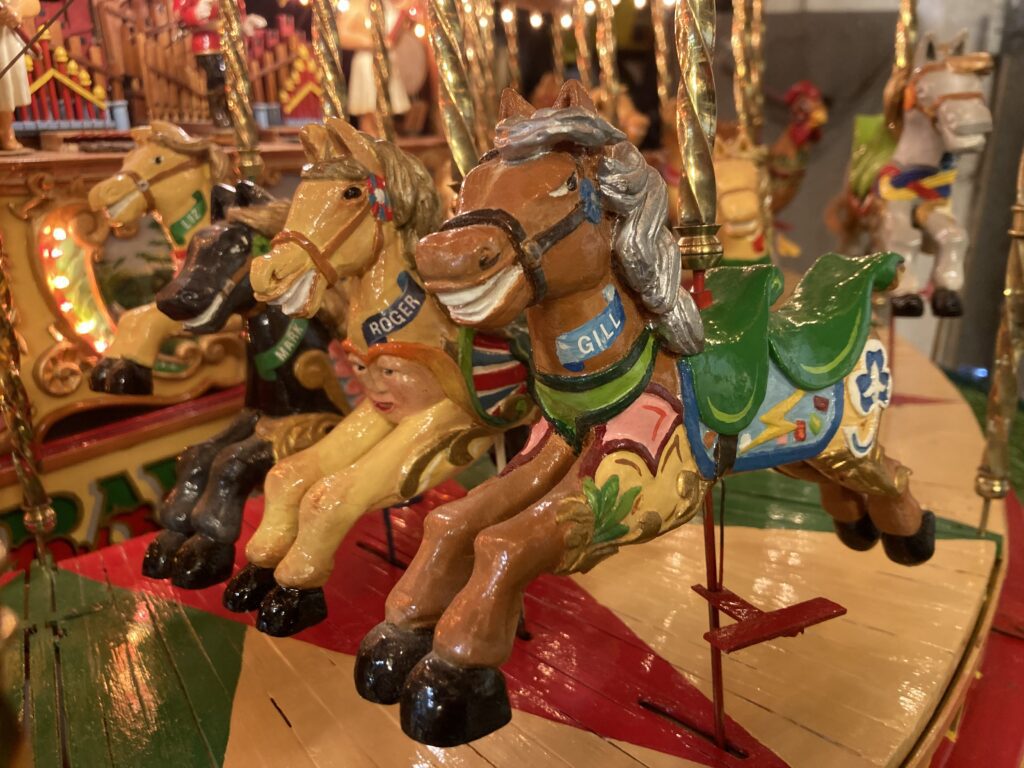
The horses are made from lime, technically a hardwood but is soft enough to carve easily. They are named after friends and family. Gill is Chris’s wife. “We were involved with Girl Guides for donkey’s years and at one point Gill was a District Commissioner” says Chris. “So there’s the Girl Guide’s symbol and the blanket over the saddle is the camp blanket – she was known as ‘Lightening’.”
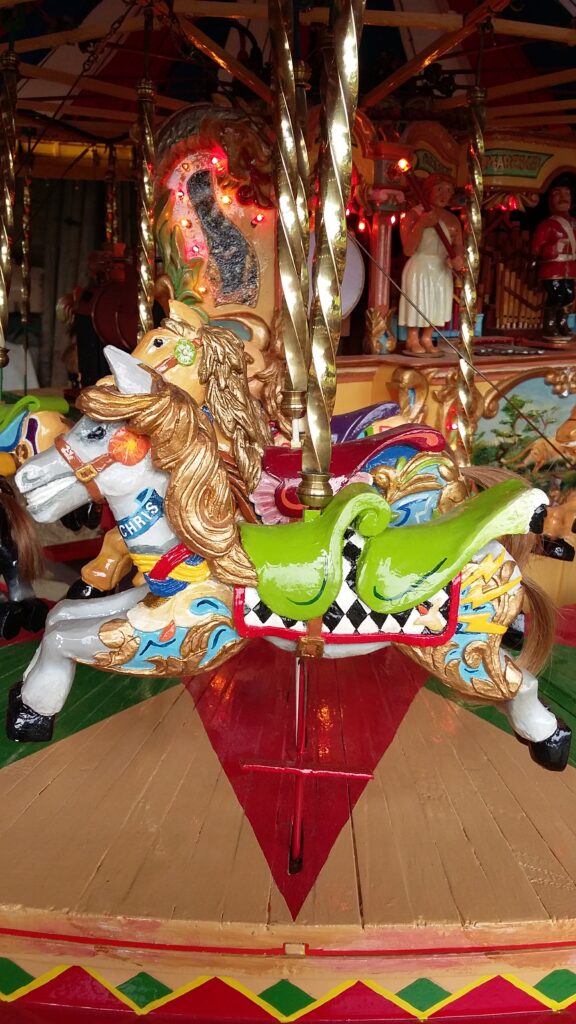
Chris has carved electrical sparks coming out the back of his own horse to symbolise his career as an electrician. There’s red, yellow and blue wires for the 3 phase electricity and the blanket is for his old school, Magdalen College School.
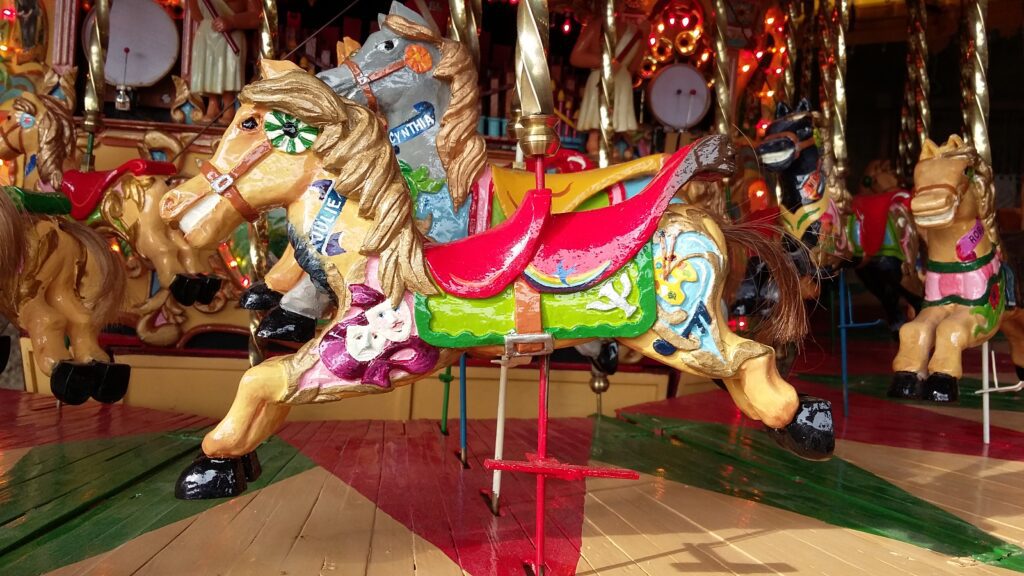
Julie is one of Chris and Gill’s daughters. She likes art and theatre and there’s the psychiatry symbol on the blanket, which is her chosen career.
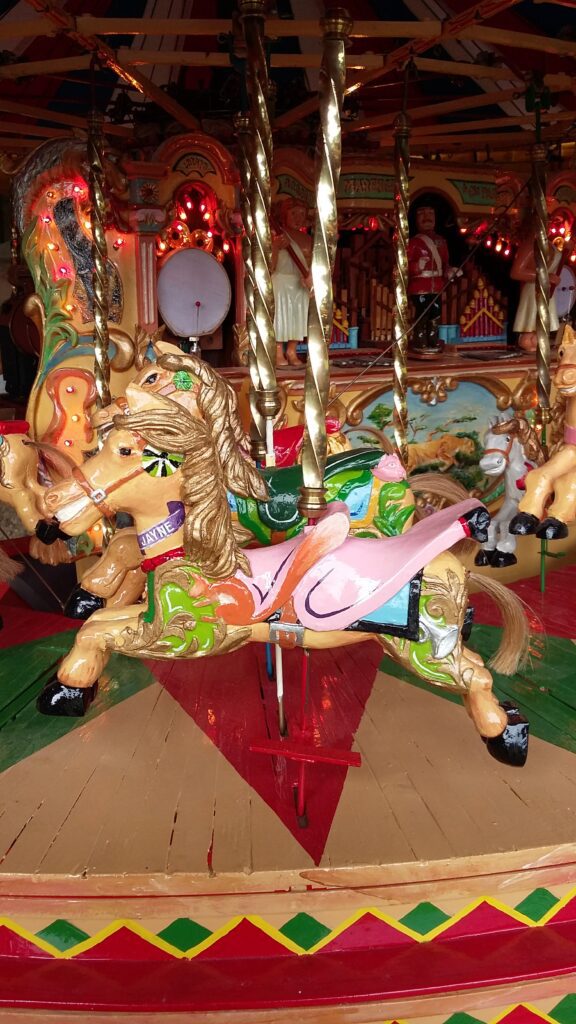
Jayne is their eldest daughter. Chris has carved her cornet on the back legs of the horse from when she played in the Oxford silver band.
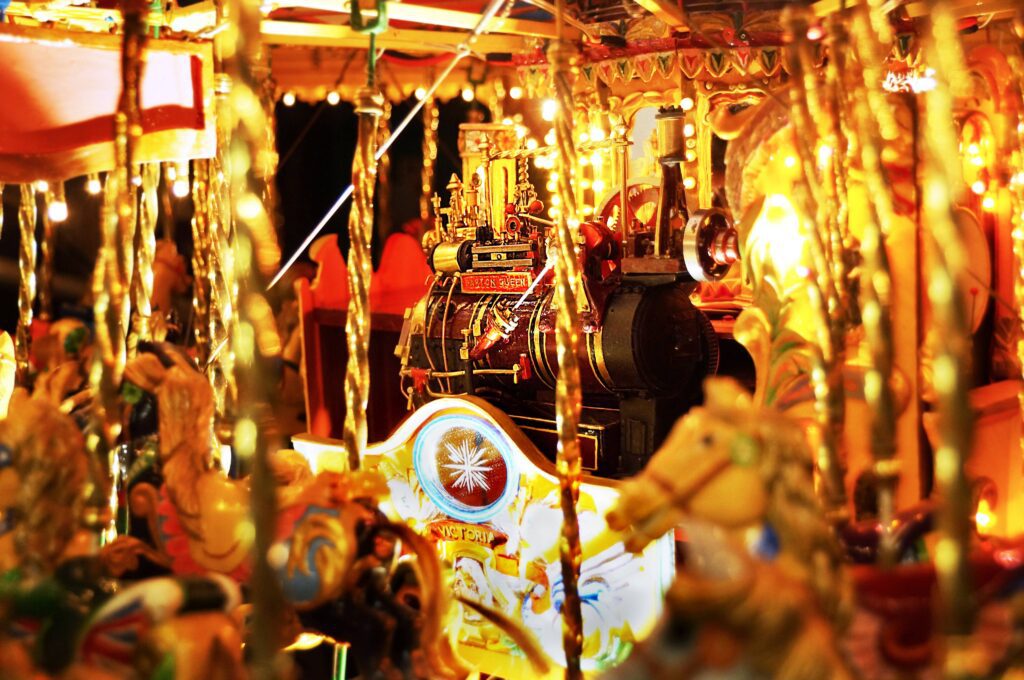
All lit up with the organ playing.
